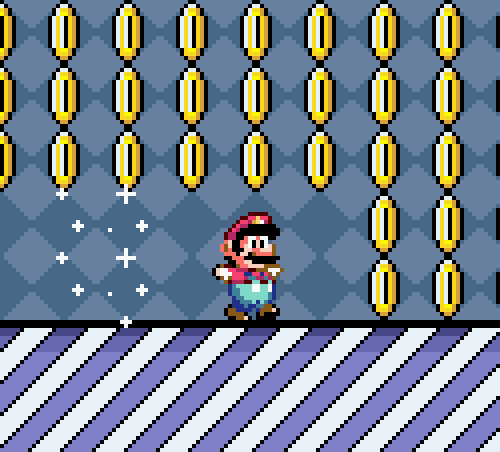
Merge Mining
Merge Mining
Merge Mining is the future of Proof of Work (PoW) is one of the most popular consensus algorithms for securing cryptocurrencies. It is the addition of new blocks of transactions to a cryptocurrency blockchain.
It simply prevents double-spending or replicating the same digital currency and uses it for more than one transaction through secure recording, confirmation, and transactions. PoW uses the hash function. The hash function is a type of cryptographic function that encodes information exposed in blockchain technology using mathematical functions. This is to ensure the uniqueness and authenticity of that information.
The poW effect is irreversible. It causes each hash of the block to encrypt the data of the preceding block, the current block, and so on until it covers the whole blockchain.
In short terms, proof of work can be accomplished when particular computers or mining machines solve a complicated mathematical problem and are rewarded by attaching a block containing transactions to the blockchain. But unfortunately, there is likely no reliable way to solve these mathematical problems; that is why crypto miners need to make guesses in other to find the answer to the problem.
History of Proof of work
Proof-of-Work was first executed by Bitcoin, which was the first cryptocurrency. This consensus mechanism enables Bitcoin to maintain its security. When mining a blockchain, he is referring to this proof-of-work mechanism.
Miners worldwide contest to secure the Bitcoin blockchain and earn profits. The reward is about 6.25 BTC and can be obtained in 10 minutes on average if the Bitcoin supply attains 21 million coins. After that, the reward will drop to nothing. This limit exists because that is the highest number of coins that can be created, according to the code written by Satoshi Nakamoto – Inventor of Bitcoin.
The proof-of-Work mechanism is proven to be tested and trusted. When the fiscal value of the BTC network rises, miners are provided with financial incentives to join the network. This fortifies the blockchain and strengthens its security due to the enormous energy required to mine the Bitcoin blockchain. It is infeasible for an individual to have control of the chain hence keeping the coin's integrity and decentralization.
Why is Merge Mining crucial to the future of Rare Scrypt Altcoins?
Merge Mining “Aux Pow”Proof-Of-Work makes available economic incentives for miners, thereby vindicating the risk they take on their investments in machines or equipment. The stochastic nature of Proof-of-Work also implies that new Bitcoin is haphazardly shared between various people. In this system, any miner can solve a block. This means that nobody or a group of people can take hold of a newly launched BTC. In other words, the system is democratic. Notwithstanding, the likelihood of a miner solving a block relies on the computing power of their mining equipment.
Aside from Proof-of-Work, there are other consensus mechanisms. Some digital currencies make use of them, and such include proof-of-authority, proof-of-stake, and proof-of-weight. However, each one comes with an advantage and a disadvantage even though they all serve the same purpose: to render a way to confirm and process transactions while protecting the network.
For serving purposes, proof-of-work helps to secure the network from malevolent activities. It makes sure that miners cannot introduce sham blocks into the blockchain. If a miner attempts to attack the network, it must employ many costly resources. Not only that, they will not get the newly released Bitcoin that responsible miners receive. For this reason, it is more sensible not to attack the chain.
Proof-of-Work is very important for miners because of the purpose it serves. That purpose incentivizes miners to backup and protect the coin's network.
Example of Proof of work
When transactions occur in BTC, they pass through a security confirmation. Then, the transaction is grouped into a block which will be mined. The Proof-of-work algorithm of Bitcoin then creates a hash for the block. BTC uses the algorithm known as SHA-256, which always makes 64-character hashes.
As a miner, you have to struggle to be the first to generate the marked hash, which is below the hash attached to the block. If you win the competition, you can add the blockchain network's most recent block of transactions. In the process, you will also receive rewards in BTC as new coins and transaction fees.
The objective of the proof-of-work algorithm is to add a new block in the space of 10 minutes. To achieve this, the difficulty level of mining BTC needs to be modified based on how swiftly miners add blocks. If mining is occurring too rapidly, the computations become more complex. If it is slower, they get more superficial.
Proof of work and mining
Decentralized cryptocurrency networks are required to ensure that no one uses the same money more than once without an overseeing body like PayPal interfering.
As aforementioned, Proof-of-work is the inherent algorithm that sets the difficulty and rules for the work miners carry out. Proof-of-work helps to add legitimate blocks to the blockchain. Without this, the network chain will not be easy to follow, and you will not know the current state of the network. The more the work done, the longer the chain gets. Also, the higher the block number, the more sure the blockchain can be of the current condition of things.
Miners are required to use computing resources to maximize the use of the proof-of-work. This is how it works for them.
- Novel transactions are grouped: Users purchase and sell cryptocurrency, and data from these transactions are attached to a block.
- Miners contend to process the novel block: They do so by trying to be the first to solve complex mathematical problems. Then, as proof that they have solved the problem, also called a hash, the miner obtains the right to process the block of transactions.
- A miner is selected to introduce a new block: The winner obtains a new cryptocurrency as his reward, and a new block is added to the chain.
Cryptocurrencies that utilize proof of work
Apart from Bitcoin, many other digital coins are based on proof-of-work. They include
- Litecoin
- Bitcoin Cash
- Dogecoin
- Xi?
Merge Mining Conclusion
Proof of work is well known in the world of crypto mining. It is a consensus mechanism for verifying blockchain transactions. Miners utilize proof of work to ensure that only valid transactions are recorded on the blockchain. Consequently, the miners assist in protecting the blockchain from possible attacks that could endanger the miner's investments and cause anyone dealing with businesses that have to do with blockchain transactions to suffer losses.

